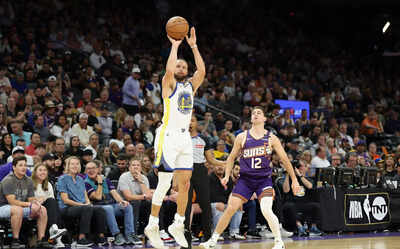ARTICLE AD BOX

(Image Source - Getty Images)
In the season 2025-26, the NBA will make a rule change concerning the implementation choice on how unsuccessful heaves end of period are captured in the official reports. This modification will imply that missed long-range attempts at the conclusion of quarters will be listed as team miss field-goal attempts and not as those of individual players.
The idea was to remove the statistical disadvantage to the players who choose to go after such risky shots and this may result in more action packed games.
The NBA will implement this change for the 2025-26 season affecting only the first three quarters
With the updated guidelines, end-of-period heaves refer to shots taken in the last three seconds of the first, second, or third quarters, originating from the backcourt and roughly 36 feet from the basket. For the fourth quarter or overtime, the usual rules apply since it's the end of the game.
This change doesn't impact the shots that go in, which still enhance individual stats, but it moves the tracking of misses to a team level. This way, players' shooting percentages remain unchanged, which is vital for metrics like true shooting percentage and player efficiency rating.
Instagram posts reflecting Charania's announcement highlighted, "NBA introduces new rule for 2025-26 season: end-of-period heaves no longer count as individual player attempts."
How can this new NBA rule impact the game?
The new rule is likely to promote bolder play as periods wind down, which could result in more exciting highlight moments like half-court buzzer beaters. Players who used to hold back, especially those concerned about keeping their shooting percentages up for contracts or All-Star spots, might start taking these shots with more confidence.
As an example, such players as Stephen Curry and Tyrese Haliburton as their long shots notorious could really inspire others without affecting the statistics in an adverse way.The collective strategy may evolve, because coaches may designate specific playwrights when making such shots, yet their own statistics will remain the same.Also Read: Stephen Curry’s three-point revolution is both a blessing and a problem for the NBA, says Matt BarnesIn general, this could make games way more fun for fans since there would be fewer times when teams just run down the clock. Some critics believe however it may reduce the concentration on efficiency although the prime intention is to increase excitement, as opposed to merely safeguarding personal figures. And we will follow-up on the long-term impact within the 2025-26 on the season, and implement any changes by the data collected we get out of it.



.png)
.png)
.png)
















 2 hours ago
3
2 hours ago
3







 English (US) ·
English (US) ·